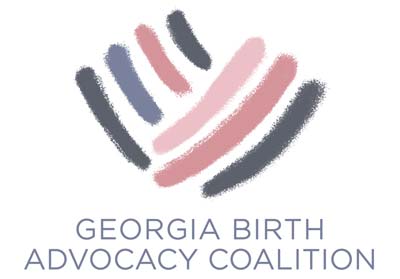5 Myths About Maternal Mortality in Georgia
Georgia is the most dangerous state in the United States to give birth. Our maternal mortality rate is 46 for every 100,000 births. That means that 1 in 2,173 birthing people die giving birth. It is safer to give birth in more than 90 other countries than it is to give birth in Georgia. This isn’t an anomaly. The United States is the most dangerous place in the developed world to give birth, ranking 46th worldwide.
Most people have never heard these statistics—a product of how little we care about mothers and families. Even among those that have, myths about maternal mortality persist. Media reports about pregnancy-related deaths often highlight the behavior of the woman who died, or talk about unhealthy lifestyles or older mothers. The truth is that maternal mortality is the product of a collapsing maternal health care system that has chosen to prioritize profit over people. Here are the 5 most prevalent myths about maternal mortality—and the truth behind these myths.
Birthing People Are Dying Because of Unhealthy Lifestyles
According to a USA Today investigation, 30 states have refused to scrutinize the medical care provided to mothers who died during childbirth. Instead, review committees have focused on the women, arguing that they were overweight, old, or had unhealthy lifestyles. The evidence does not support this claim.
In other nations, women are also having babies at older ages. Obesity is a worldwide epidemic, as are drug and alcohol addiction. Yet other countries manage not to kill birthing people at nearly the rate we do in the United States. The maternal death rate in Georgia is 15 times higher than in Finland. Moreover, most reviews of maternal mortality suggest inadequate medical care is a major culprit.
One report from a group of Maternal Mortality Review Committees found that provider and institutional factors were to blame for 57% of maternal deaths. Reviews consistently find that the overwhelming majority of maternal deaths are preventable. The latest review from Tennessee, for example, found that 85% of deaths in that state were preventable. In many states, we have no idea how many deaths are preventable because until recently, analysts have chosen not to tally or research maternal mortality.
Childbirth is Inherently Dangerous
Childbirth can be dangerous. So can just about anything people do. Having a child is not inherently dangerous, and giving birth rarely has to be a death sentence—especially when people have access to quality medical care. In many European nations, the maternal mortality rate is just 3 per 100,000. That means most providers will never see a woman die during childbirth, and most birthing people will never experience a life-threatening event.
In the U.S., nearly 2 out of every 100 birthing people experience a life-threatening event during birth. In addition to the hundreds of people who perish giving birth each year, an additional 41,000 nearly die. The causes of maternal mortality are complex, but a dangerously high C-section rate, inadequate medical care, poor access to healthcare, and systemic discrimination have all been implicated. These issues are all fixable, yet we have collectively chosen not to fix them.
C-Sections Are Safer
C-sections have increased nearly 60% since 1996. Many C-sections are births of convenience. While the doctor might tell the woman the surgery is necessary, it may not actually be necessary. For example, one survey found that doctors tell 32% of women that their babies may be too big to be born vaginally. The average weight at birth of these babies was just 7lbs 11 oz.
Unnecessary c-sections greatly increase the risk of maternal mortality. About a third of women who die giving birth do so after having a c-section.
Labor is the Most Dangerous Part of Giving Birth
In movies and on television, women die during labor or shortly after. The reality is that the most dangerous time is the postpartum period. About 60% of maternal deaths occur in the postpartum period. Tragically, this is a time when a new parent is least likely to see her doctor. During the last weeks of pregnancy, a woman may see her doctor or midwife weekly or more. After the baby is born, when the woman faces the greatest danger, she is sent home with few instructions and no help.
This speaks volumes about how little we care about new mothers. The transition to parenthood is exhausting. Mothers may be sleep-deprived. They’re recovering from birth, and possibly from surgery. The last thing they want to do is haul a baby back to the hospital. So women may avoid care until it’s too late. Medical home visitors, more frequent follow-ups with doctors, and home care from midwives could all correct this trend.
We’re Working Hard to End Maternal Mortality
Many people mistakenly believe it’s only a matter of time before we turn the corner on maternal mortality. The reality is that we’re doing nothing. This legislative session, Georgia’s politicians did not pass a single piece of legislation to reduce maternal mortality. Seventy-nine counties in Georgia lack a single obstetrician. Despite this, Georgia has refused to license homebirth midwives to fill care gaps. We refused to accept Medicaid expansion, which has been repeatedly linked to a reduction in maternal mortality.
Hospitals are not required to enact any specific protocols to stop maternal mortality. Their mortality data is not publicly available. Nor are the deliberations of Georgia’s medical licensing board. There is no way to reliably track a doctor’s history of malpractice or maternal mortality.
We’ve done almost nothing. And maternal mortality will continue to rise until that changes.

